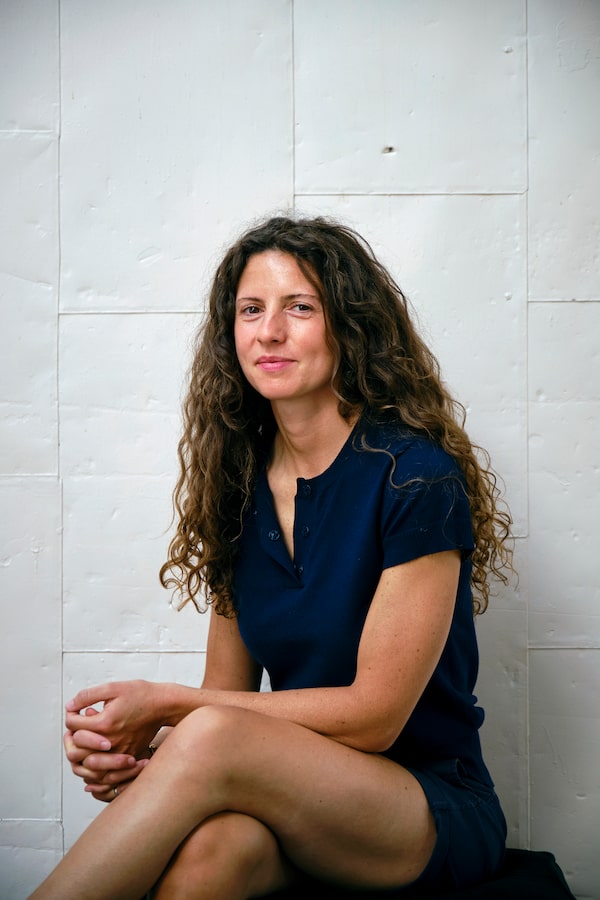
Alicia Wynter/The Globe and Mail
If there’s one thing Sarah Landstreet can promise Georgette Packaging’s clients, it’s that she understands how difficult it is to create striking containers on a tight budget.
The McGill University engineering graduate was once on the path to a cushy career, having moved from London, Ont., to London, England, for a career in sustainability consulting. But in 2008, she noticed that North American bakeries were storming the United Kingdom. So she took a risk and moved to her mother’s hometown of Belfast, where she started a bakery.
Three years later, she sold the company. But the experience gave her plenty of insight into running a food business. Smaller bakeries and restaurants don’t have the wherewithal or expertise to compete with massive chains in creating attention-grabbing packaging. That, she says, is a lost branding opportunity.
“There were a lot of re-sources for smaller businesses in terms of designing a logo or getting a website built. But somehow packaging seemed to be this mystery. It’s a very old-school industry that’s very hard to navigate,” she says.
In 2013, two years after returning to Canada, Landstreet started Georgette Packaging in Kitchener, Ont. Before even launching, she interviewed roughly 25 bakeries across the country about their packaging needs. “I spent the first year and a half incubated at a factory,” she says. “I based myself at a box factory to understand how packaging is manufactured. I wanted to have the same kind of grounding in the other side of the business as I did on the bakery and the food-business side.”
The birth of Georgette Packaging coincided with the rise of Instagram as one of the world’s most popular social media platforms, making recognizable packaging and branding even more crucial. “People are taking pictures of what they’re eating. It can be a picture of food or it can be a picture of food with your brand attached to it,” says Reuben Vanderkwaak, a Georgette client and the owner of the Hamilton, Ont.-based Donut Monster. “You can easily get your name, your brand, your logo and your message out further.”
When it comes to design, Georgette partners with design firms while letting the client take the lead. But the company does offer advice on what works for social media. “I would recommend lots of colour, lots of contrast, so that no matter what you put on the packaging, it’ll really pop,” says Landstreet.
After running the business by herself for the first two years, Landstreet now has a team of 14 people who serve nearly 250 clients across Canada and the United States. These include packaging consultants, who advise clients on different packaging techniques, and an operations team, which handles logistics such as shipping and storage. A third group, the technical design team, works on how to execute design ideas.
“Our objective is to be like your packaging department that shows up and teaches you everything,” Landstreet says.
That’s what happened to Donut Monster. As it grew from a wholesale provider to also running its own café in Hamilton, the company’s packaging needs grew as well. This was compounded by the COVID-19 pandemic, which all but brought dining in to a halt. Vanderwaak says it has given him peace of mind to know packaging is entirely someone else’s headache. “Georgette handled a lot of those logistics, and it simplified things on our end to the point where I almost don’t need to worry about it. I just wait to hear from them about how things are going,” he says.
Landstreet says Donut Monster insisted on using eco-friendly kraft paper, but it was hard to make black ink stand out on brown paper. “We used particular inks and printing techniques to make their design pop,” she says.
Georgette also helps businesses research environmental sustainability and cost. Each municipality across North America has its own recycling rules and regulations. “We emphasize being aware of what’s possible,” Landstreet says. “A lot of packaging that’s labelled as compostable can’t be recycled, and it can’t even be composted in most communities. A coffee cup is recyclable in some municipalities, but not necessarily in your community. If we give them that information, maybe the business owner will think about their next purchase differently.”
Simon Blackwell, owner of the Blackbird Bakery in Toronto, was keen on using recycled material for its packaging and was drawn to Georgette by a shared value system. “Georgette has strong values in terms of the materials they’re using and where they’re producing,” says Blackwell. “And they’re a carbon-neutral company, paying to offset their carbon footprint. We also stand behind all those things.”
While Georgette Packaging boasts that most of its products are paper-based, Landstreet admits it won’t be entirely feasible for food businesses to go plastic-free any time soon. Most restaurants survived on take-out during pandemic-driven lockdowns, which exacerbated the problem of plastic waste. But Landstreet says food businesses are eager for change, adding that those opting for sustainable materials will have an edge as the Canadian economy gradually moves away from plastic. But a government push would certainly help hasten that transition. “Right now, it’s so cheap to make new plastic that no one bothers making sustainable packaging,” she says.
Georgette’s future is predicated on its commitment to the environment. “We want to be educating businesses. We want to be sharing the information we’ve learned, and helping to develop more printing and packaging techniques that reduce the environmental impact of packaging,” Landstreet says. “Our aim is to be the most environmentally preferable packaging suppliers on the market.”
Your time is valuable. Have the Top Business Headlines newsletter conveniently delivered to your inbox in the morning or evening. Sign up today.
 Uday Rana
Uday Rana